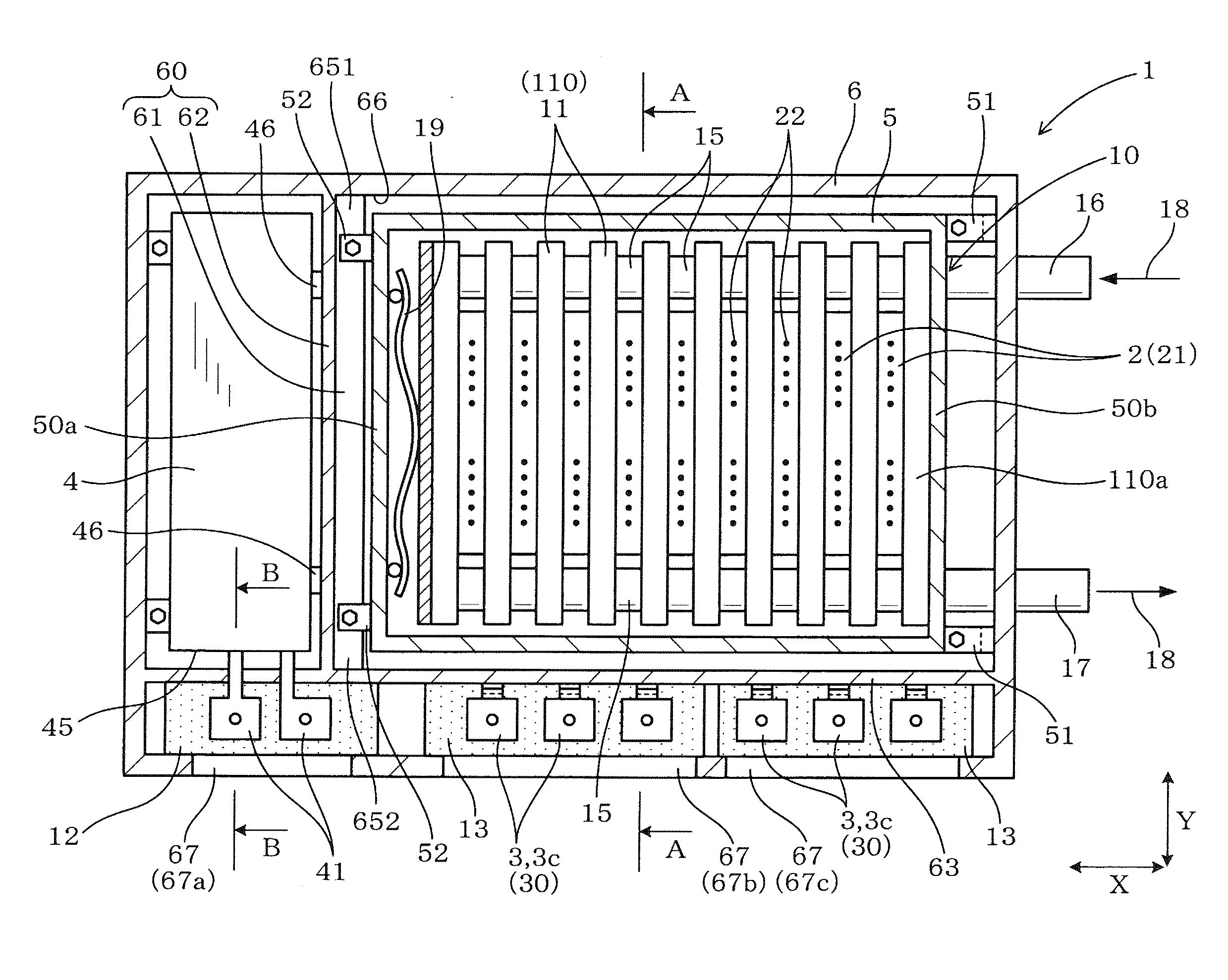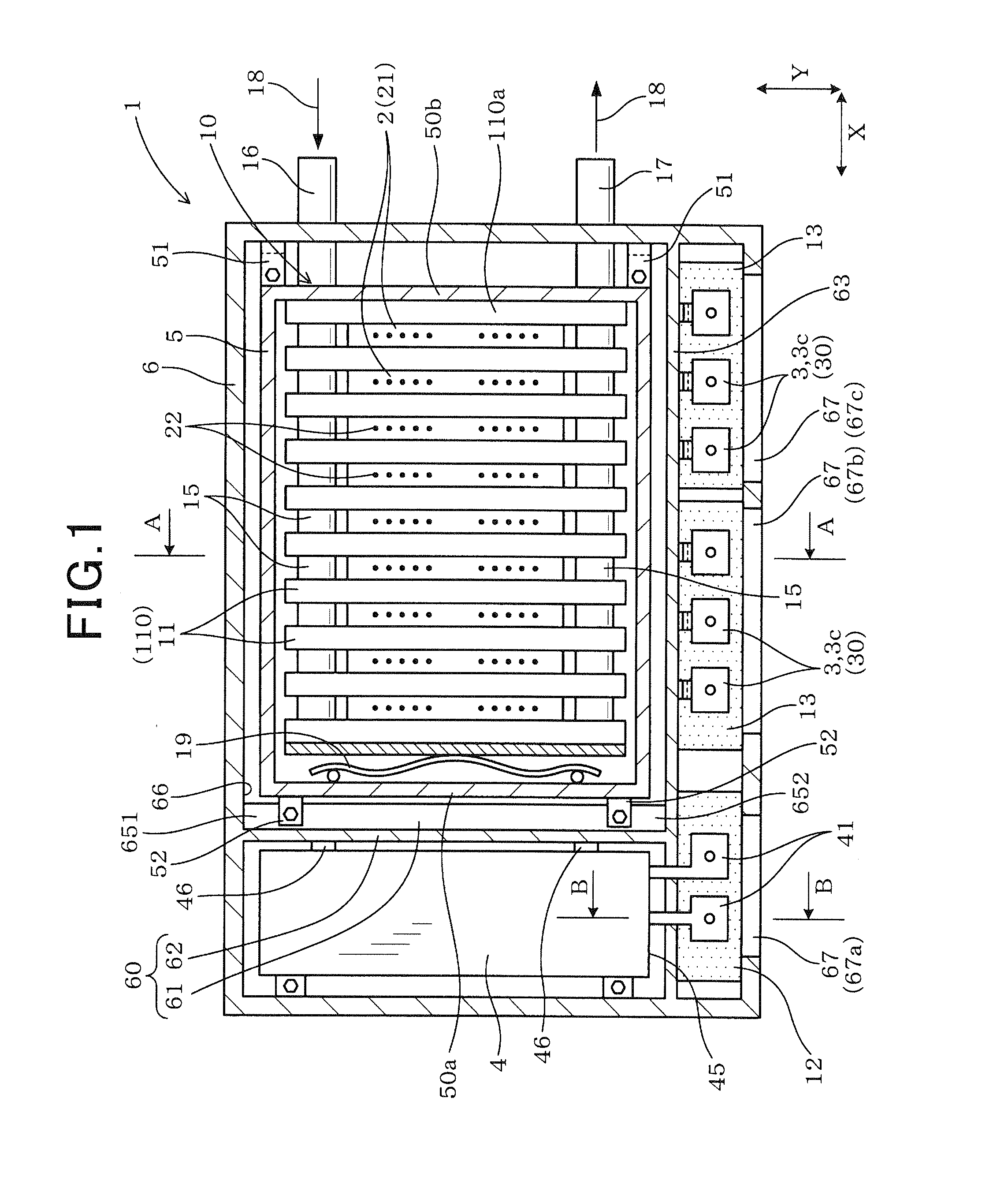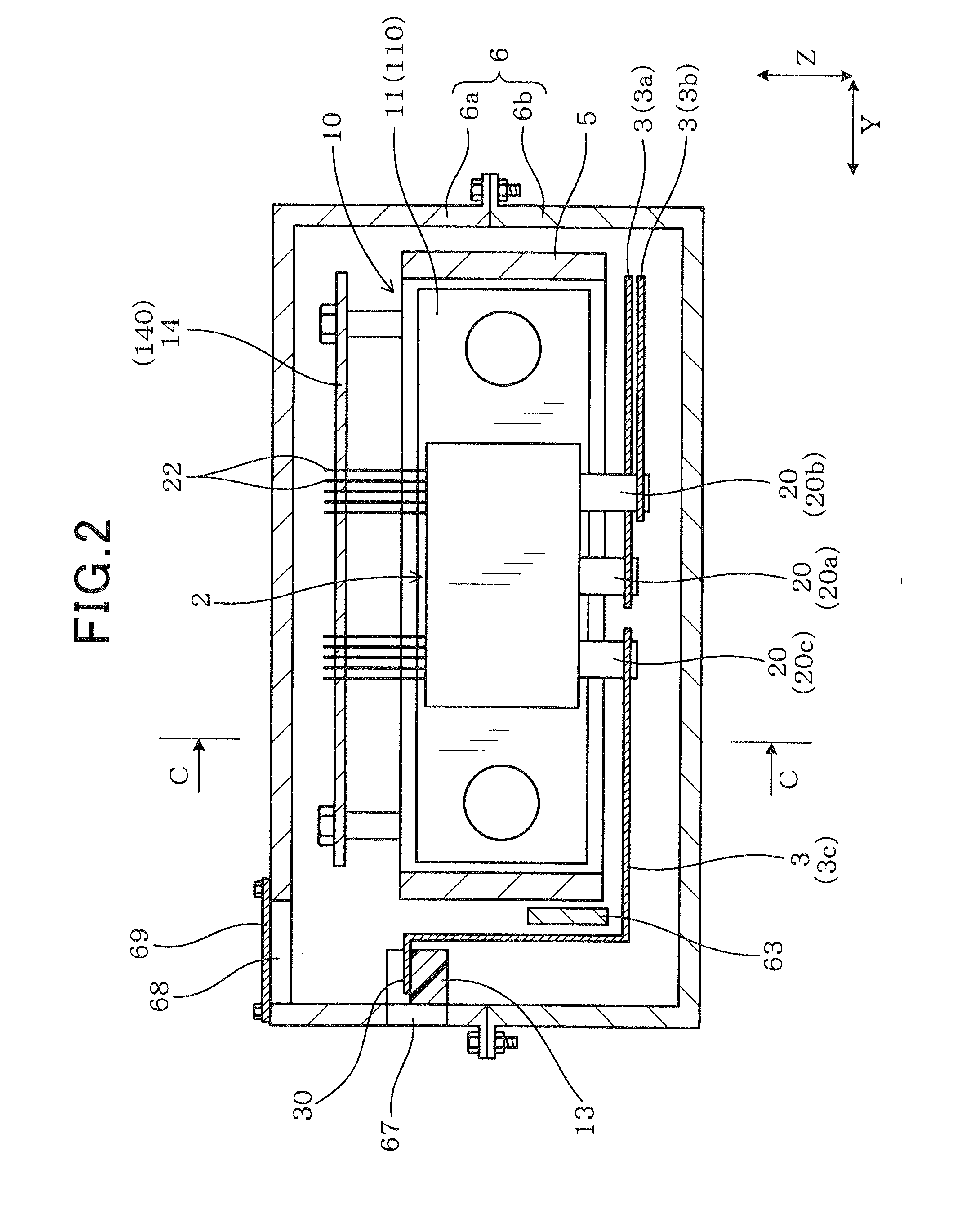Power converter permitted to be reduced in size and manufactured at decreased cost
a technology of power converters and power converters, which is applied in the direction of electrical equipment, electrical equipment contruction details, circuit arrangements on support structures, etc., can solve the problems of increasing the amount of metal materials used in the making of connecting components b>99/b>, reducing the production cost and weight of the power converter, and ensuring the stability of installation. , the effect of increasing the degree of vibration resistan
- Summary
- Abstract
- Description
- Claims
- Application Information
AI Technical Summary
Benefits of technology
Problems solved by technology
Method used
Image
Examples
first embodiment
[0069]Other arrangements and operations are identical with those in the
[0070]FIG. 10 illustrates the power converter 1 of the third embodiment which is different in configuration of the input terminals 41 of the capacitor 4 from that of the first embodiment. The same reference numbers, as employed in the first embodiment, refer to the same parts, and explanation thereof in detail will be omitted here.
[0071]The capacitor 4 has two input terminals 41: a first input terminal 41a and a second input terminal 41b. The first input terminal 41a is located away from the end 45 of the capacitor 4 in the Z-direction.
[0072]The second input terminal 41b is held on a terminal table 12 through a claw retainer(s) not shown which is formed on the terminal table 12. The first input terminal 41 a and the second input terminal 41b are joined together by a fastening mechanism 415 (i.e., a bolt and a nut in this embodiment).
[0073]The second input terminal 41b is formed by a first section 411, a second se...
third embodiment
[0074]The above structure of the power converter 1 of the third embodiment is so designed that the first input terminal 41 a of the capacitor 4 is located away from the end 45 of the capacitor 4, thus resulting in an increase in degree of freedom of designing the capacitor 4. The length of the second input terminal 41b (i.e., the second section 412) in the Z-direction is preferably minimized. For example, the second section 412 is so shaped as to extend at right angles from the first section 411. This results in a minimum amount of metallic material of the second input terminal 41b, thus decreasing the production cost thereof and minimizing the electric resistance that is a factor in producing the heat in the second input terminal 41b.
PUM
 Login to View More
Login to View More Abstract
Description
Claims
Application Information
 Login to View More
Login to View More - R&D
- Intellectual Property
- Life Sciences
- Materials
- Tech Scout
- Unparalleled Data Quality
- Higher Quality Content
- 60% Fewer Hallucinations
Browse by: Latest US Patents, China's latest patents, Technical Efficacy Thesaurus, Application Domain, Technology Topic, Popular Technical Reports.
© 2025 PatSnap. All rights reserved.Legal|Privacy policy|Modern Slavery Act Transparency Statement|Sitemap|About US| Contact US: help@patsnap.com



